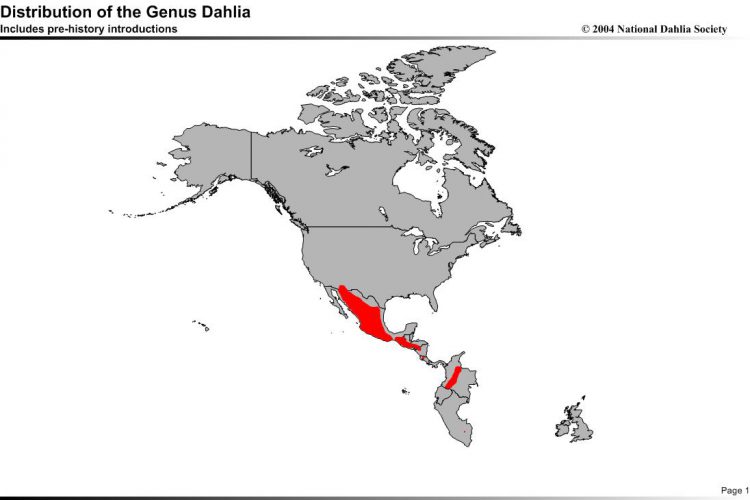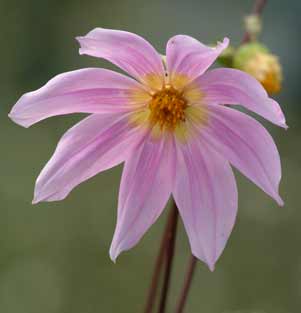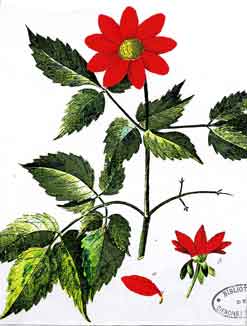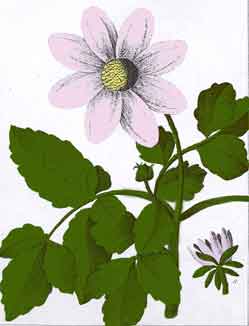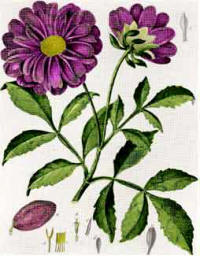The initial named species imported into Europe were Dahlia pinnata, Dahlia rosea and Dahlia coccinea. The first dahlias grown out side of Madrid were single (open-centred) & Multi – ray open centre flowered, but it was not long before the horticultural growers of the day discovered the Dahlia was a natural hybrid and when grown from seed, it readily changed its form and colour, so that today we have a range of Dahlia types that offer something to please everyone.
The illustrations above originate from Cavanille’s “Icones et Descriptiones Plantarum” 1791 & Oct 1795. Colour has been added and is based on herbarium sheets held at Real Madrid Botanical garden. ©2004 National Dahlia Society.
The first double flowered cultivars were called Show and Fancy types. The Show were self-coloured, ball like flowers, while the Fancy ones were multi-coloured. During the mid-1800’s, these show and fancy flowers attained cult status with gardeners, and several thousand different cultivars were recorded. Other forms followed, in 1829 the first Anemone flowered dahlia appeared and then in 1850 the first Pompon were raised in Germany, and was named after the bobble on a French Sailor’s hat. The origin of the Cactus & Decorative type belongs to the arrival of “Juarrezii” according to the written records it was imported as a piece of tuber from Mexico in 1872 to Holland. M.Van de Berg of Uttrecht who had received this so-called species (actually a cultivar) from Mexico and released stock of the cultivar in 1874. Subsequently “Juarrezii”, named after a President of Mexico, was introduced into the UK by W. Cullingford who would become Vice President of the NDS and distributed by H.Cannell. After 1880. Collerettes are the last form of dahlia to have been raised, they have their origin in France and are due to sporting of dahlias at Jardin Botanique de Lyon at the end of the 19th century.
Today, there are cultivars in the form of the waterlily, the paeony, the orchid, the chrysanthemum and the anemone, to say nothing of the main formations like the decorative (flat, broad petals), the cactus and semi-cactus types (rolled, pointed petals) and the ball forms (globular flowers) that have as their smallest relative the popular Pompon Dahlias that beguile so many gardeners.
There is every colour and colour combination to choose from, except the elusive blue (which we are still seeking) which is covered by the wide range of violet and mauve cultivars. Sizes range from the smallest types, called Topmix or Lilliput Dahlias to the giants that have blooms over a foot in diameter carried on powerful stems. Today’s hybridisers are still seeking the true blue dahlia, as well as one with a scent, and one that is frost hardy.

